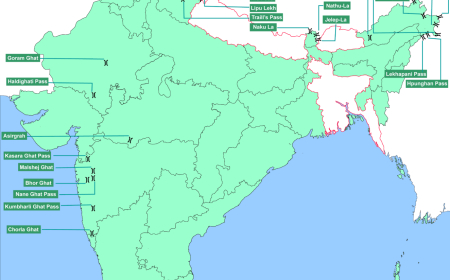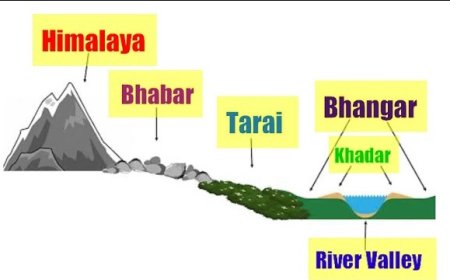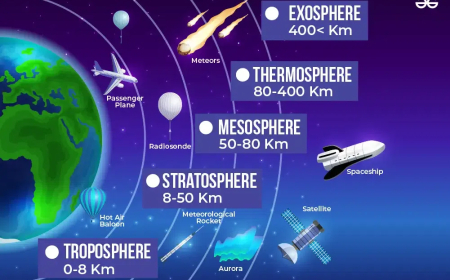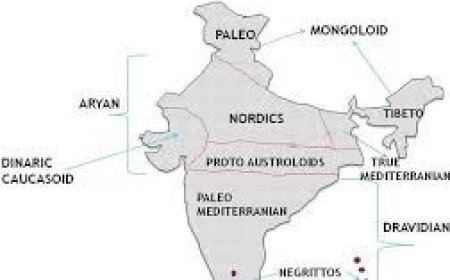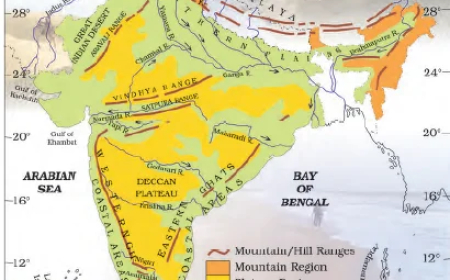Physical features- Himalayas- English
Physical features- Himalayas- English
Physical features- Himalayas- English
-
5 Divisions- Northern Mountains, Northern Plain, Peninsular Plateau, Coastal Plain, Islands
-
Northern Mountain- Age, Type, How Formed, Length, Width, Roof of world, Himalaya-meaning, 3 Divisions- Trans-tethys, Granite, Marine,Ranges- ZLKK, Himalayas-Type, How formed, Division- G/H’dri, L/H’chal, O/S’lik- Width , Average Height, Peaks, Features; Passes and States and Importance with international. Purvanchal- Hills List; Importance of Himalayas.
Summary of Northern Mountains
- Age and Type: The Northern Mountains are the youngest and loftiest mountain chains in the world.
- Formation: Formed a few million years ago by the folding of the Earth's crust due to tectonic activity.
- Length and Width: Stretch 2,500 km from the Indus gorge to the Brahmaputra gorge; width varies from 500 km in Kashmir to 200 km in Arunachal Pradesh.
- Roof of the World: The Pamir Knot is known as the "Roof of the World," linking the Himalayas with Central Asia.
- Himalaya Meaning: Derived from Sanskrit, meaning "The Abode of Snow."
Divisions of Northern Mountains:
-
Trans-Himalayas:
- Location: North of the Great Himalayan range, covering Jammu and Kashmir and the Tibetan plateau.
- Width: About 40 km in the east and west, 225 km in the central part.
- Composition: Contains Tethys sediments, marine fossils, and Tertiary granite.
- Prominent Ranges: Zaskar, Ladakh, Kailash, and Karakoram.
-
Himalayas:
- Type: Young fold mountains.
- Formation: Result of the Eurasian and Gondwana landmasses' movement, uplifting the Tethys Sea.
- Divisions:
- Greater Himalayas (Himadri):
- Width: About 25 km.
- Average Height: Approximately 6,000 m.
- Peaks: Mt. Everest (8,848 m) in Nepal, Kanchenjunga (8,598 m) between Nepal and Sikkim.
- Features: Continuous range, permanent snow cover, many glaciers like Gangotri, Yamunotri, and Siachen.
- Lesser Himalayas (Himachal):
- Height: 3,700 to 4,500 m.
- Width: Up to 80 km.
- Rocks: Slate, limestone, quartzite.
- Ranges: Pir Panjal, Dhauladhar, Mahabharat.
- Hill Stations: Shimla, Mussoorie, Nainital, Almora, Ranikhet, Darjeeling.
- Passes: Karakoram Pass, Zojila Pass, Shipki La Pass, Bomdila Pass, Nathu La Pass, Jelep La Pass.
- International Passes: Khyber Pass (Pakistan-Afghanistan), Bolan Pass (Pakistan).
- Outer Himalayas (Siwaliks):
- Elevation: 900-1,100 m.
- Average Elevation: 1,000 m.
- Width: 10 km in the east to 50 km in the west.
- Features: Most discontinuous range, longitudinal valleys (Duns in the west, Duars in the east).
- Greater Himalayas (Himadri):
-
Purvanchal Hills:
- Location: Eastern offshoots of the Himalayas, in northeastern India.
- Hills List: Dafla, Abor, Mishmi, Patkai Bum, Naga, Manipur, Mizo, Tripura, Mikir, Garo, Khasi, Jaintia.
Importance of Himalayas:
- Climate: Block southwest monsoon winds, causing heavy rainfall in North India; form a natural barrier.
- Water Source: Source of many perennial rivers like the Indus, Ganges, and Brahmaputra.
- Tourism: Known for natural beauty with many hill stations and pilgrimage centers.
- Resources: Provide raw materials for forest-based industries.
- Climate Protection: Prevent cold winds from Central Asia, protecting India from severe cold.
- Biodiversity: Renowned for rich biodiversity.
Himalayan peaks as per the descending order
- Mt. Everest (8,848 meters),
- Kanchenjunga (8,598 meters),
- Makalu (8,481 meters),
- Nanda Devi (7,817 meters).
- Mount Everest
- It is Earth's highest mountain.
- It is located in the Mahalangur Himal sub-range of the Himalayas.
- The border of China and Nepal runs across the Everest summit point.
- Its height is about 8,848.86 metres.
- Dhaulagiri
- It is the seventh highest mountain in the world.
- Its height is about 8,167 metres.
- It is the highest mountain within the borders of Nepal.
- The Pokhara town is south of the Annapurnas, an important regional center.
- Nanga Parbat
- Nanga Parbat is also known as Diamer.
- It is the ninth-highest mountain on Earth.
- Its height is about 8,126 metres.
- It is the westernmost major peak of the Himalayas.
- Nanda Devi
- The peak name means "Bliss-Giving Goddess".
- It is regarded as the patron goddess of the Garhwal and Kumaon Himalayas.
- It is the second-highest mountain in India, after Kangchenjunga.
- Its height is about 7,816 metres.
- It is located in Chamoli Garhwal district, Uttarakhand.
- The Nanda Devi National Park was declared a UNESCO World Heritage Site.
Reading
The Northern Mountains consist of the youngest and the loftiest mountain chains in the world. Formed only a few million years ago by the folding of the Earth's crust due to tectonic activity, they stretch for a distance of 2,500 km from the Indus gorge in the west to the Brahmaputra gorge in the east. The width of the Northern Mountains varies from 500 km in Kashmir to 200 km in Arunachal Pradesh. The Pamir Knot, popularly known as the “Roof of the World,” serves as the connecting link between the Himalayas and the high ranges of Central Asia. From the Pamir, the Himalayas extend eastward in the form of an arc. The term “Himalaya” is derived from Sanskrit, meaning “The Abode of Snow
The Northern Mountains, functioning as a great wall, are grouped into three divisions: the Trans-Himalayas, the Himalayas, and the Eastern Himalayas or Purvanchal hills. Additionally, the Aravalli range, one of the oldest fold mountain ranges in the world, is a significant feature.
The Trans-Himalayas
lie to the north of the great Himalayan range, encompassing regions in Jammu and Kashmir and the Tibetan plateau. Due to its extensive area in Tibet, it is also known as the Tibetan Himalayas. The Trans-Himalayas are approximately 40 km wide at its eastern and western extremities and about 225 km wide in its central part. They contain the Tethys sediments, and the rocks of this region have fossils bearing marine sediments underlain by Tertiary granite. Partly metamorphosed sediments constitute the core of the Himalayan axis. The prominent ranges of the Trans-Himalayas are Zaskar, Ladakh, Kailash, and Karakoram.
The Himalayas constitute the core part of the Northern Mountains. These young fold mountains were formed by the movement of the Eurasian landmass in the north and the Gondwana landmass in the south. The Tethys Sea, found between these two landmasses, was uplifted by the compression, resulting in the formation of the Himalayas. This range consists of many divisions: the Greater Himalayas (Himadri), the Lesser Himalayas (Himachal), and the Outer Himalayas (Siwaliks).
The Greater Himalayas, also known as the Himadri, rise abruptly like a wall north of the Lesser Himalayas, with a width of about 25 km and an average height of about 6,000 m. They receive less rainfall compared to the Lesser Himalayas and the Siwaliks, and physical weathering is less effective here. Almost all the lofty peaks of the Himalayas, including Mt. Everest (8,848 m) located in Nepal and Kanchenjunga (8,598 m) located between Nepal and Sikkim, are found in this range. This range is the most continuous and is covered in permanent snow, housing many glaciers like Gangotri, Yamunotri, and Siachen. The Himalayas hold the record for having the maximum number of the world's highest peaks, with 9 out of the 14 highest peaks.
The Lesser Himalayas, or the Himachal, is the middle range of the Himalayas, with heights varying from 3,700 to 4,500 m and a width of up to 80 km. Major rocks in this range include slate, limestone, and quartzite. This region is subject to extensive erosion due to heavy rainfall, deforestation, and urbanization. Notable mountain ranges in this part are Pir Panjal, Dhauladhar, and Mahabharat. Major hill stations such as Shimla, Mussoorie, Nainital, Almora, Ranikhet, and Darjeeling are located in this range. Important passes include Karakoram Pass, Zojila Pass, Shipki La Pass, Bomdila Pass, Nathu La Pass, and Jelep La Pass. The Khyber Pass, connecting Pakistan and Afghanistan, and the Bolan Pass in Pakistan are also significant.
The Outer Himalayas, or the Siwaliks, extend from Jammu and Kashmir to Assam. They are partly made by debris brought by the Himalayan rivers, with altitudes varying between 900-1,100 meters and an average elevation of 1,000 meters. The width of the Siwaliks varies from 10 km in the east to 50 km in the west, making it the most discontinuous range. The longitudinal valleys found between the Siwaliks and the Lesser Himalayas are called Duns in the west and Duars in the east, which are ideal sites for settlement development.
The Purvanchal Hills are the eastern offshoots of the Himalayas, extending into the northeastern states of India. Most of these hills are located along the border of India and Myanmar, with others inside India. These hills include the Dafla Hills, Abor Hills, Mishmi Hills, Patkai Bum Hills, Naga Hills, Manipur Hills, Mizo Hills, Tripura Hills, Mikir Hills, Garo Hills, Khasi Hills, and Jaintia Hills.
The Himalayas are of immense importance.
They block southwest monsoon winds, causing heavy rainfall in North India, and form a natural barrier to the subcontinent. They are the source of many perennial rivers like the Indus, Ganges, and Brahmaputra. The Northern Mountains are described as a paradise for tourists due to their natural beauty, with many hill stations and pilgrimage centers such as Amarnath, Kedarnath, Badrinath, Vaishno Devi temple, and Buddhist, Jain, and Sikh centers located here. They provide raw materials for many forest-based industries and prevent cold winds from central Asia, protecting India from severe cold. The Himalayas are renowned for their rich biodiversity.


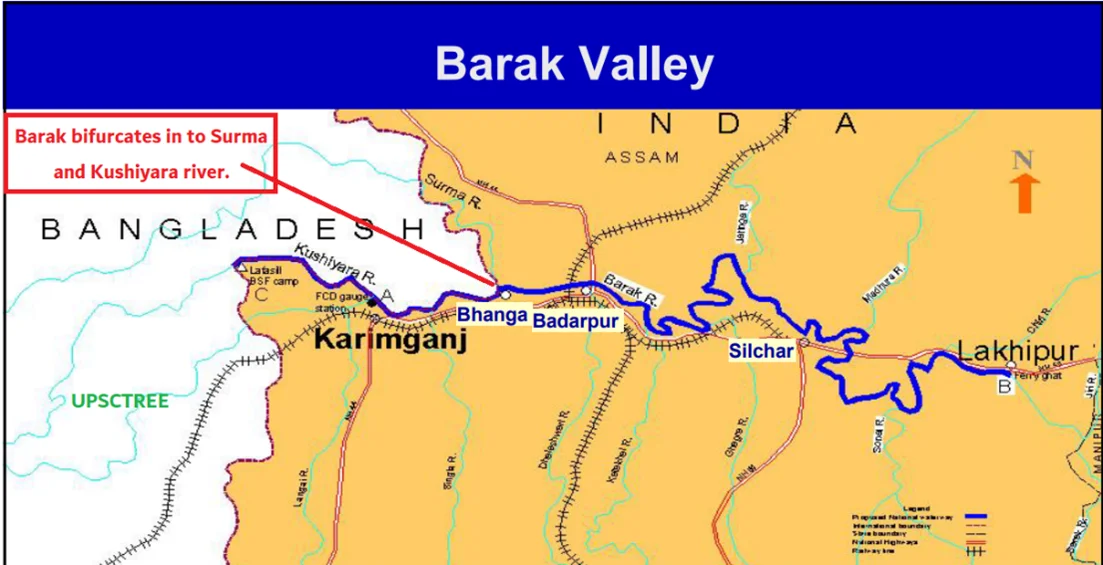
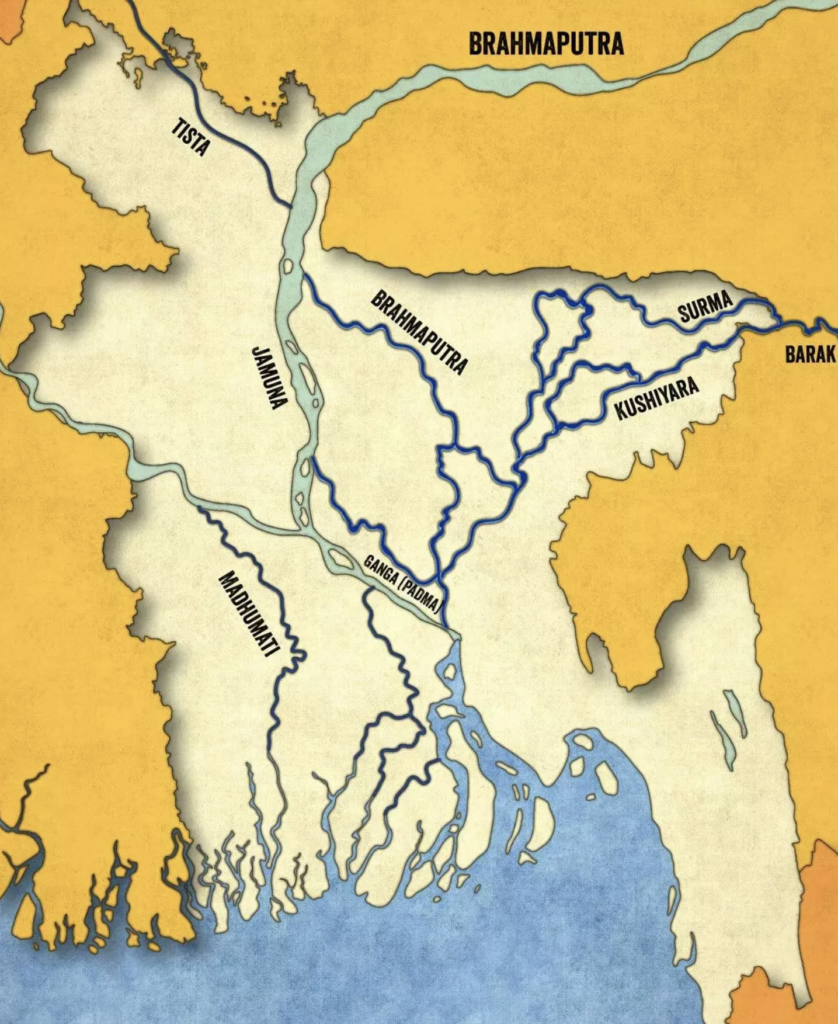
What's Your Reaction?








